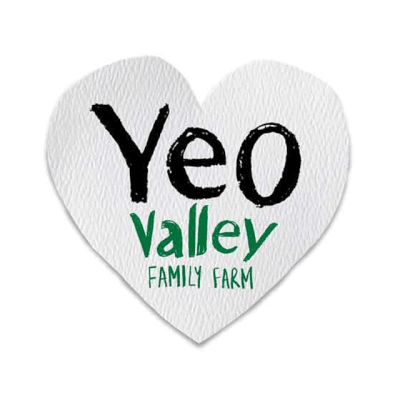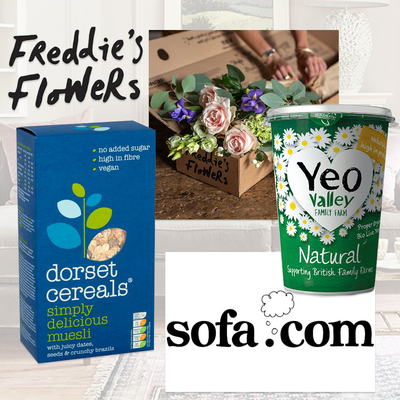
The Branding Guru With The Midas Touch
I’ve always loved typography. After stints at the Radio Times, Punch magazine and Michael Peters – a world-class branding and design consultancy – I founded Big Fish with my business partner Lisa.
At Big Fish, our mantra is ‘Always think like a start-up’. I love looking at a blank piece of paper and thinking where we might be in a few years’ time. That said, the ethos at Big Fish is very different these days. For instance, sustainability is now at the forefront of everything we do – my three young daughters keep me really accountable. So, we’ve made it a priority to help businesses draw down their carbon footprint through the work they do. We want to prove business can be a force for good.
‘Think big, dive deep and swim fast’ is another phrase to live by. The climate challenge, for example, is an opportunity for change and thinking like new. It’s also about reversing the damage that’s been done, which is why it’s a strategy we now work on with all our clients.
Every business should start building their brand by answering five questions:
-
What’s your purpose?
-
Who is your target audience?
-
What do you want those people to think, feel, say and do?
-
How are you going to make them do that?
-
How will you measure success?
Remember, great brands are purely figments of people’s imagination. The product can probably be made by anyone – it’s more about the power of positive association, which is what forces people to make certain choices and gravitate towards certain names.
Brands come to work with us at all stages of their journey. There’s the discovery phase (when they’re simply trying to exist), the validation phase (when they’re working out what is and isn’t working), the efficiency stage (when they want to do things better), and the squeezing phase (when they’re already big but wondering if there’s any growth left to play for). Honestly speaking, we can add more value early on. We tend to meet a lot of our clients through referral, too. I’ve always said that good work creates more work.
When it comes to taking clients on, we ask ourselves three questions.
-
What’s the growth opportunity?
-
What’s our role going to be?
-
Where is the work going to live?
Freddie’s Flowers, for instance, came to us through an existing client. He already had the name, but our advice was to keep it simple – just add a bit of wit and wisdom. A large part of our job is to reflect back to clients what we hear them say, so they can unlock what it is that makes them special.
The most important thing for any brand is culture. Without a good culture, you won’t get good people. It’s simple – stand by the promises you make and the behaviours you encourage in your staff. The internet has helped expose brands that are really just a logo. Take Innocent Smoothies, for example. Its journey coincided with the start of the internet age – and its next-generation culture felt real and authentic right from the start.
Generally speaking, there are three types of brands.
-
The first are artisan makers and craftspeople, which are small family businesses that command high prices.
-
Then, if they grow, these turn into quality brands, where they take on investment or end up being sold to bigger brands.
-
Then, if they get bigger, they become mainstream.
That said, the best brands – no matter how big they are – always maintain a start-up mentality. They’re always thinking about what they would do differently today if they started the company all over again.
Sofa.com was one of the best projects for us. It’s since been copied by so many other companies – but it was massively innovative at the time. That’s a good piece of advice: don’t think for a second that because you are original today, you will be in three weeks’ time. You’ve got to relentlessly pursue what you can do better on behalf of your customer.
Any business owner should try to be involved and empower their team. In our experience, when the owners have been closely involved in building the brand, that’s when braver decisions have been made. The thread between all of our clients is founders who believe design and communication are really important – and they put their consumer first, too.
Charlie Bigham has been a client for 24 years. And Yeo Valley has worked with us for more than a decade. It’s a testament to us that they’re still on board. We’ve had a record year despite Covid, too. Why? Because it’s brought the start-ups out in droves. In a year like this, you have a choice: sit back or look at it as a great opportunity.
An identifiable brand should put design at the heart of everything it does. The way you make things look is so important. Form should always follow function, too: you can always make things look pretty – it’s more important to build a great experience for the consumer, even it’s just how easy your website is to use.
If you ask me, typography should be part of the national curriculum. Think about it – our children are taught literacy so thoroughly and read every single day. But they’re not told that it’s possible to change the way people see something or think, just by changing the font. It’s about setting a tone of voice and understanding the meaning behind communication. Take Sofa.com again – the way we drew that font just made it look cosy. And we changed the dot regularly for different images depending on the context. It can make such an impact if you know what you’re doing.
Colour is also a huge factor. A good example was our work with Dorset Cereals. To elevate the brand from muesli that looked like it deserved to be sold in a pet store, we immediately put it in expensive-looking boxes which were colour coded according to flavour. Multiple colours might have been considered brand suicide at the time, but the founder eventually agreed that it was a counter-intuitive and ‘quiet’ way of making it stand out on the supermarket shelf. It didn’t shout or scream, but the different shades encouraged people to take a closer look.
Even so, my advice to any business is don’t do anything just because. Decisions have to be true to you and should speak volumes about what you do. Also, accept that people do judge things by their cover: they want to understand your credibility and their own empathy – often in a nano-second.
Currently, there are some really powerful trends in branding. Consumer mindsets have shifted massively in the last three to five years, but the last 18 months have been exponential. People are increasingly rejecting big corporates. You have to remember everything we do now is in the public domain – including the agenda set in the boardroom. Everyone has a phone and access to the internet, so transparency is key. Direct-to-consumer brands are another huge trend – the internet has connected businesses to their own users in a completely unprecedented way.
If you only remember four things, make it these: be transparent, connect directly with your consumer, establish a workplace culture and try to make a difference. Things are moving so fast these days – you’ve got to keep up.
For more information on Perry Haydn Taylor and branding your business, visit BigFish.co.uk.
DISCLAIMER: We endeavour to always credit the correct original source of every image we use. If you think a credit may be incorrect, please contact us at info@sheerluxe.com.

